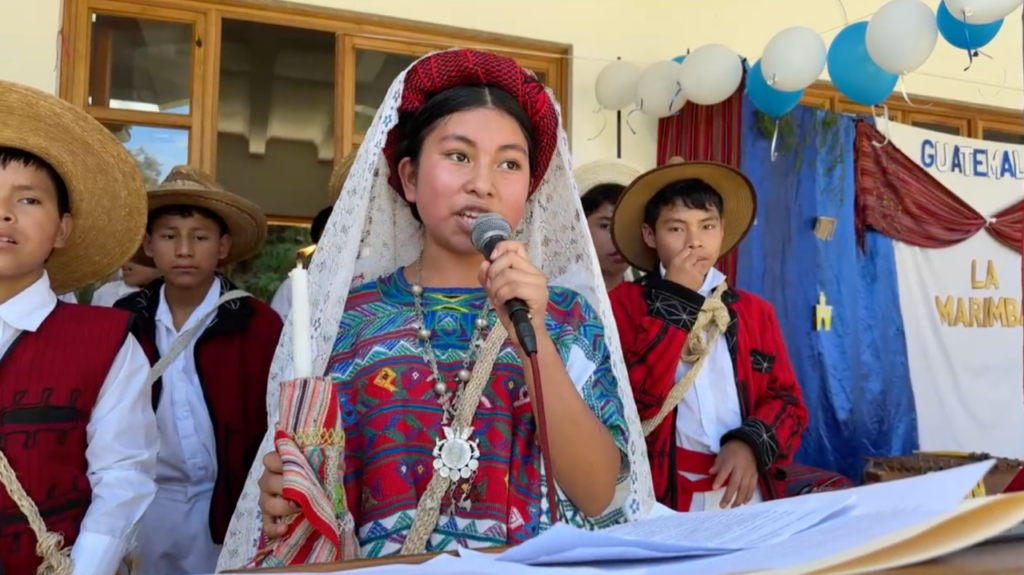
In a vibrant display of tradition and beauty, Nicolás Christian School recently celebrated Guatemalan Independence Day (September 15th) with a unique focus on the rich Mayan culture. Unlike any other, this special event beautifully showcased the unique heritage of the Ixil in Guatemala.
A Day Filled with Tradition
The Nicolás Christian School students and staff adorned themselves in traditional Ixil region clothing from various villages in the Quiché Department, creating a vivid tapestry of cultural pride and diversity. The school grounds came alive with an array of displays featuring handmade pottery, intricate weaving, traditional foods, and crops. Visitors were greeted by stunning floral carpets, the rhythmic melodies of the marimba—Guatemala’s national musical instrument—and the vibrant sight of round kites, traditionally flown on All Saints Day to ward off bad spirits. The celebration extended beyond mere displays. Handcrafted representations of Mayan archaeological discoveries sparked curiosity. Adding to the lively atmosphere, a live puppy and clucking chickens charmed attendees, bringing an authentic touch of rural Guatemalan life to the event.
Honoring Contributions
The heart of the celebration was a poignant tribute to women’s contributions to Guatemala’s development. A female student embodied this spirit by wearing Ixil clothing, adorned with a mantilla (lace veil), and holding a lit candle. Her presence symbolized Mayan women’s enduring strength and importance throughout Guatemalan history.
A Tribute to Heritage
Our students paid homage to their heritage through marimba music and heartfelt speeches, proudly singing the Guatemalan national anthem. This celebration was not just an event but a testament to Nicolás Christian School’s deep respect for Ixil culture in Guatemala.
Your support is invaluable to us, and we are deeply grateful for your generosity in allowing our students to engage in such meaningful cultural experiences. Thank you for being a part of our community and helping us celebrate the rich traditions that shape our students’ identities.

